Pixel 7 Pro vs iPhone 14 Pro vs Galaxy S22 Ultra: Camera Comparison

The Pixel 7 Pro is the last major flagship of 2022, but has Google taken advantage of the extra time on its hands to upgrade the camera and deliver the ultimate smartphone camera experience?
With a refined design and a longer 5X telephoto lens, as well as some clever software tricks, the Pixel 7 Pro is a serious contender. And on top of all this, it has price on its side: it's the most affordable flagship of the year as its $900 price undercuts both the $1,100 iPhone 14 Pro Max and the $1,200 Galaxy S22 Ultra.
So let's waste no time and jump to the most important camera comparison of the year, where the Pixel 7 Pro takes on the iPhone and the Galaxy! We start with a quick look at the hardware on board each of the phones, but quickly jump to the actual photos and all the important differences.
Read more:
- Pixel 7 Pro review
- Pixel 7 Pro battery life
- Pixel 7 Pro best deals
- Best camera phones: which one is right for you
Camera Specs:
The Pixel series have never been just about the hardware, but it is an important factor, so here are the camera specs on the Pixel 7 Pro and how they compare against the iPhone and the Galaxy:
| Google Pixel 7 Pro | Apple iPhone 14 Pro Max | Samsung Galaxy S22 Ultra | |
|---|---|---|---|
| Main camera | 50MP, 25mm, f/1.9 1/1.31" sensor size | 48MP, 24mm, f/1.78 1/1.28" sensor size | 108MP, 23mm, f/1.8 1/1.33" sensor size |
| Ultra-wide | 12MP, 14mm, f/2.2 1/2.9" sensor size | 12MP, 13mm, f/2.2 1/2.55" sensor size | 12MP, 13mm, f/2.2 1/2.55" sensor size |
| Telephoto | - | 12MP, 3X zoom, f/2.8 1/3.5" sensor size | 10MP, 3X zoom, f/2.4 1/3.52" sensor size |
| Long-range zoom | 48MP, 5X, f/3.5 1/2.55" sensor size | - | 10MP, 10X zoom, f/4.9 1/3.52" sensor size |
| Front | 10.8MP, AF, 4K video | 12MP, AF, 4K | 40MP, AF, 4K |
Interestingly, take a closer look at those sensor sizes (the lower the second number, the larger the sensor size). The iPhone has the largest main camera sensor among these three, which you might not have anticipated!
All three phones have ultra-wide cameras with very similar specs, however, it's worth mentioning that the ultra-wide sensor on the Pixel is a bit smaller than the other two, so it should be more susceptible to noise.
The Pixel, however, uses a bigger sensor for its periscope zoom shooter, which gives it a theoretical advantage, and means it should be able to use the zoom camera in even dimmer lighting.
Day Photos
Pixel sticks with more toned down colors that can look a bit dull
The 7 Pro photos come with that signature Pixel look, which hasn't changed much throughout the years. What stands behind those words are images with high dynamic range (shadows lifted up and no clipped highlights), but also with very noticeable texture boost.
However, the real difference is in the Pixel color rendition. While the iPhone and Galaxy go for boosted colors that have a bit of extra pop, the Pixel just sticks with neutral, even a bit dull color reproduction. On this cloudy afternoon, images from the Pixel could use a bit of extra pop of color to liven them up, and we feel that on a few occasions they came out underexposed.
The iPhone, on the other hand, definitely has a much brighter exposure, and images from it stand out with even just how bright they look. But Apple has also gone overboard with the sharpening, something that is particularly noticeable when you view the photos on a bigger display.
Finally, we feel that it's actually the Galaxy which had the most balanced look most of the time. It nails a perfect exposure on all of the photos, and it manages to provide a lot more color in terms of color contrast and fidelity. It is not perfect by any means, and the last set of photos shows how it can go berserk with saturation (notice the clouds), but most of the time, we liked the images out of it best.
Ultra-wide
A wider field of view is a welcome addition on the Pixel
The Pixel 7 Pro now comes with an ultra-wide camera that has a wider field of view. The previous generation used to have a 17mm ultra-wide lens, which was nowhere nearly as wide as the iPhones and Galaxies, and now this new one on the Pixel 7 Pro is a 14mm lens and it has a much closer look to that of the others.
Colors are consistent between the main and ultra-wide cameras on the Pixel, which is nice to see, but this also means that all of the issues we mentioned in the previous section apply here multiplied by two thanks to the vastly wider perspective. The dull colors on the Pixel are even more noticeable and the contrast between them and the animated colors on the other two is even more striking.
The images out of the iPhone are strikingly bright and again we see sharpening being way too aggressive, so we have to once again lean towards the balanced middle-of-the-road approach that Samsung takes with the ultra-wide camera.
Low Light
Pixel is still king of low light photography
The biggest improvement the Pixel 7 Pro brings in low light is just how much faster it is to take pictures at night. The Pixel 6 was the king of night photography, but it was aggravatingly slow, often taking more than 5 seconds for a single picture. The new Pixel 7 Pro takes just a couple of seconds, and feels effortless in comparison.
After looking at dozens of low light photos, we think the Pixel is still the king of night time/low-light smartphone photography. It captures incredible detail, sharp images and pleasing colors at night, and the only thing you might hold against it is that sometimes it lacks that authentic night time look (the sky in particular can be a bit too bright). Actually one more thing: the Pixel has a lot more flaring (around bright objects like lamps), more than the others.
The iPhone, in contrast, seems to have a bit more issues with night time photos than the other two, and again that extreme sharpening often ruins the look of photos here.
The Galaxy is a very close contender to the Pixel, but it lacks just a bit in the clarity as the Pixel resolves detail better at night and has a slightly higher dynamic range.
Zoom Comparison
The 5X periscope camera on the Pixel is very versatile, works in even dim light
We are yet to explore the zoom camera on the Pixel in a lot more detail, but we wanted to share this set of photos shot at just moments before sunrise. You can see that at 5X the Pixel clearly has an advantage over the other two, and that is only expected as it has a native 5X camera that it uses. The Galaxy and the iPhone use their 3X cameras in this case and crop in digitally, and this results in a lot of noise, especially on the Galaxy.
But notice something very interesting: in the 10X photos, the Galaxy is a complete disaster. While in such dimmer conditions, the Pixel can still use its 5X camera, the Galaxy does not have enough light to use the 10X periscope lens, so it has to again use the 3X camera with digital crop, and the results are horrendous. Of course, given sufficient light, the 10X camera on the Galaxy is clearly the best among these three, but interestingly, it is also the most capricious one, requiring the most light.
Of course, having just this one set of images might seem unfair to the Galaxy, and we will be updating this article with more daytime shots to illustrate how in good light, it is still the absolute zoom king.
We will also be adding more detail about the 2X mode on the Pixel. It uses the middle section of the main camera sensor to come up with this new 2X "lossless" mode, which is a similar trick to what Apple first introduced with the iPhone 14 Pro. Interestingly, Galaxy does not offer such an option and it uses traditional, digital 2X zoom.
Portrait Mode
Despite improvements, Pixel remains the worst flagship phone for portrait photos
For years, Portrait mode has been the one feature lacking the most in the Pixel experience. This year, it is improved thanks to the new 2X zoom mode for the camera. As we explained earlier, it uses the central portion of the main camera sensor to give you a full-resolution 12MP photo. So how do portraits look on the Pixel?
You have two Portrait mode options labeled 1X and 2X on the Pixel, but this is a misnomer. The 1X mode is actually not comparable to 1X on the main camera, it's actually cropped in and is roughly equivalent to 1.7X field of view if you were using the main camera, and similarly the 2X mode, is also mislabeled and is equivalent to around 2.6X on the main camera.
Our biggest gripe with Pixel 7 Pro Portrait mode photos is that you don't get to see the effect in the viewfinder and it is applied after you capture the image. Unfortunately, often times, we would shoot in portrait mode, then open the image and see that the background has not been blurred. This does not happen on the iPhone and the Galaxy which tell you right in the viewfinder when you need to get closer or move away for the effect to work, while you get no such warning on the Pixel.
Quality with the 1X portrait mode is decent, but still not quite as good as the iPhone and Galaxy, which are tied for the win in this round.
Macro Photos
The Pixel 7 Pro gets a new Macro Focus feature that allows you to get up-close macro shots, perfect for flowers, bugs, or all sorts of tiny details. The other two phones, the iPhone and the Galaxy, also have a macro mode.
One limitation to the Pixel's Macro Focus is that it cannot be used for video, while the other two phones allow you to have macro video as well. We will be updating this section with real-world photos soon and dive deeper in the macro mode quality on the Pixel.
Selfies
Pixel now supports wider selfies and that's great
*We have shot all the photos above using the wide selfie mode on all phones.
The Pixel 7 Pro comes with a wider selfie camera, great for those group selfies or just for more context, and it also now supports 4K video recording with the front shooter.
The Galaxy is the one that doesn't have quite as wide selfie mode as the other two, which we feel is a slight nuisance, but we still feel that it otherwise captures excellent colors and you have plenty of detail. The Pixel also does an excellent job and while images do look different from the Galaxy, we find the quality close enough to call this round a draw.
We would rank the iPhone just a bit below those other two as it sometimes errs with a too bright exposure, and it clips the highlights.
Conclusion

(Image Credit - PhoneArena) Pixel 7 Pro in the middle
So here is a quick recap of what we saw from each phone in this camera comparison:
Pixel 7 Pro:
- Main camera captures good detail, but slightly dull colors during the day
- Ultra-wide camera is now wider, which we like, but also captures dull colors
- It's much faster to capture low-light photos and they still look best-in-class
- The 5X camera works in even dim conditions and we loved using it
iPhone 14 Pro Max:
- The fastest camera experience and most intuitive interface
- Daytime photos often turn out a step overexposed and with excessive sharpening
- Dynamic range is not as high as the other two (clipped highlights)
- Ultra-wide camera has similar issues to main one
- Night time photos also a step behind rivals (detail is not as clear)
Galaxy S22 Ultra:
- Daytime photos strike the best balance of good exposure and pleasing (even if slightly saturated) colors
- Similar experience with ultra-wide camera
- Night time photos are a step below the Pixel in terms of clarity
- Zoom king in daylight for both photos and videos
- Dimmer light, however, renders 10X useless
- Probably the best selfie camera in the game (still)
In summary, the Pixel 7 Pro is clearly a top-tier camera phone, but we feel that Google's color science could be improved and providing two separate camera modes (a "natural" and a "saturated" one) would help many users who don't like these often dull colors you get in daylight. Portrait mode, however, is still way behind the competition. The phone is still the best in low light and the new 5X camera is second-best to the Galaxy. All of that leaves us with no choice but to give it an A- score.
After using the iPhone 14 Pro for a while, we feel like the camera experience might actually be even a slight step down from the previous generation as excessive sharpening ruins the look of photos often times, especially when you view them on a bigger screen. Of course, we have not touched upon the ProRAW file quality in this comparison, and that is a totally different beast, but also a bit more complex to use, so we leave it out of this article.
Finally, the Galaxy S22 Ultra feels like it made the least compromises in this comparison, producing solid photos in all sorts of conditions and no matter which camera you used. It's not the perfect camera, but it is closer to being one than the other two in our view.
But let us know your thoughts: which phone won this in your opinion and why? Sound off right below in the comments section!

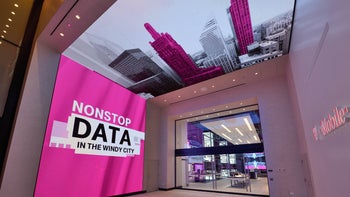
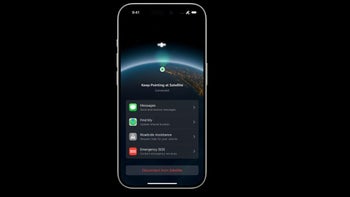
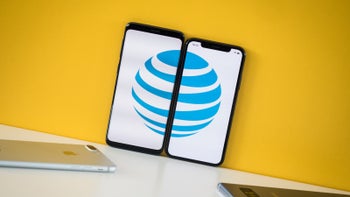

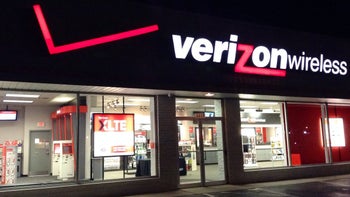

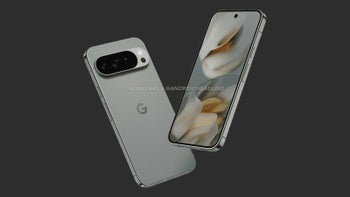
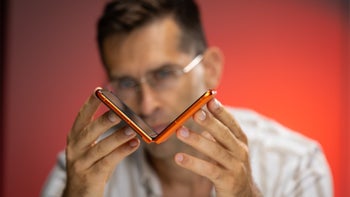


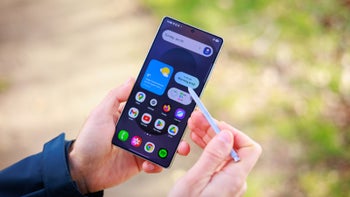
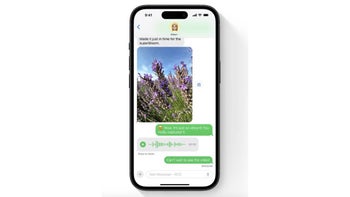
Things that are NOT allowed: